Deconstruir para reconstruir: un análisis de los órganos constitucionales autónomos en México
Este artículo busca mostrar que la concepción dominante sobre los órganos constitucionales autónomos (OCA) está equivocada. Estos organismos no son completa ni igualmente independientes del resto de poderes del Estado. Al contrario, se caracterizan por tener una variedad de diseños que les dan diferentes niveles de autonomía. Entender esta variedad de diseños es el primer paso para identificar las causas, reales o percibidas, sobre los defectos del sistema actual de equilibrio institucional, así como las consecuencias que un régimen bien diseñado podría generar. Hasta este momento, la discusión generalmente se ha limitado a si deben existir o no este tipo de organismos. A partir de este trabajo, los debates podrían abordar nuevos cuestionamientos sobre cómo deben diseñarse y cuánta autonomía habría que otorgarles.
Detalles del artículo
Uso de licencias Creative Commons (CC)
Todos los textos publicados por el Boletín Mexicano de Derecho Comparado sin excepción, se distribuyen amparados con la licencia CC BY-NC 4.0 Internacional, que permite a terceros utilizar lo publicado, siempre que mencionen la autoría del trabajo y la primera publicación en esta revista. No se permite utilizar el material con fines comerciales.
Derechos de autoras o autores
De acuerdo con la legislación vigente de derechos de autor el Boletín Mexicano de Derecho Comparado reconoce y respeta el derecho moral de las autoras o autores, así como la titularidad del derecho patrimonial, el cual será transferido —de forma no exclusiva— al Boletín para permitir su difusión legal en acceso abierto.
Autoras o autores pueden realizar otros acuerdos contractuales independientes y adicionales para la distribución no exclusiva de la versión del artículo publicado en el Boletín Mexicano de Derecho Comparado (por ejemplo, incluirlo en un repositorio institucional o darlo a conocer en otros medios en papel o electrónicos), siempre que se indique clara y explícitamente que el trabajo se publicó por primera vez en este Boletín.
Para todo lo anterior, deben remitir la carta de transmisión de derechos patrimoniales de la primera publicación, debidamente requisitada y firmada por las autoras o autores. Este formato debe ser remitido en PDF a través de la plataforma OJS.
Derechos de lectoras o lectores
Con base en los principios de acceso abierto las lectoras o lectores de la revista tienen derecho a la libre lectura, impresión y distribución de los contenidos del Boletín por cualquier medio, de manera inmediata a la publicación en línea de los contenidos. El único requisito para esto es que siempre se indique clara y explícitamente que el trabajo se publicó por primera vez en el Boletín Mexicano de Derecho Comparado y se cite de manera correcta la fuente incluyendo el DOI correspondiente.
Citas
Ackerman, Bruce (2000). The New Separation of Powers. Harvard Law Review, 113(663).
Ackerman, Bruce (2017). Good-bye Montesquieu. En Susan Rose-Ackerman, Susan et al. (eds.). Comparative Administrative Law, Edward Elgar, Cheltenham, Northampton.
Ackerman, John (2007). Organismos autónomos: El caso de México. MUNAM.
Alcocer, Jorge (29/01/2013). Autonomitis. Reforma.
Barkow, Rachel E. (2010). Insulating Agencies: Avoiding Capture Through Institutional Design. Texas Law Review, 89.
Bartlett Foote, Susan (1988). Independent Agencies Under Attack: A Skeptical View of the Importance of the Debate. Duke Law Journal, 199, pp. 223-237.
Bernstein, Marver H. (1955). Regulating Business by Independent Commission. Princeton University Press.
Bilchitz, David y LANDAU, David E. (2018). The Evolution of Separation of Powers in the Global North and Global South. En David BILCHITZ y David LANDAU (eds.), The Evolution of the Separation of Powers: Between the Global North and the Global Edward Elgar Publishing Limited.
Bonifaz Alfonzo, Leticia (2017). La división de poderes en México: entre la política y el derecho. Fondo de Cultura Económica.
Bressman, Lisa Schultz y THOMPSON, Robert B. (2010). The Future of Agency Independence. Vanderbilt Law Review, 63.
Breyer, Stephen. 1995. Breaking the Vicious Circle: Toward Effective Risk Regulation. Harvard University Press.
Caballero Ochoa, José Luis (2000). Los órganos constitucionales autónomos: más allá de la división de poderes. Anuario del Departamento de Derecho de la Universidad Iberoamericana (30).
Cárdenas Gracia, Jaime (2001). Justificación de los órganos constitucionales autónomos. Derecho y Cultura (2).
Carpizo, Jorge (2000). La reforma constitucional de 1999 a los organismos protectores de los derechos humanos. Cuestiones Constitucionales. Revista Mexicana de Derecho Constitucional, Cuestiones Constitucionales (3).
Conti-Brown, Peter (2017). The Power and Independence of the Federal Reserve. Princeton University Press.
Córdova Vianello, Lorenzo (2011). Incumplimiento de la ley y pérdida de credibilidad en las instituciones. En Esthela GUTIÉRREZ GARZA (ed.), Cambiar a México con participación social, México. Siglo XXI, UANL-Senado de la República.
Datla, Kirti y REVESZ, Richard L. (2013). Deconstructing Independent Agencies (and Executive Agencies). Cornell Law Review, 98.
García-Pelayo, Manuel (1981). El status del Tribunal Constitucional. Revista Española de Derecho Constitucional, I(1).
Gersen, Jacob E. (2011). Designing Agencies. En D. FARBER y A. O’CONNELL (eds.). Research Handbook in Public Law and Public Choice, Edward Elgar. University of Chicago Law & Economics.
Human Rights Watch (1993). News from Americas Watch, V(1).
Keck, Margaret E. y SIKKINK, Kathryn (1998). Activists Beyond Borders: Advocacy Networks in International Politics. Cornell University Press.
Kleineman, Jan (2001). Central Bank Independence: The Economic Foundations, the Constitutional Implications and Democratic Accountability. Kluwer Law International.
Laffont, Jean Jacques y MARTIMORT, David (2002). Theory of Incentives: The Principal-Agent Model. Princeton University Press.
Lewis, David E. (2003). Presidents and the Politics of Agency Design: Political Insulation in the United States Government Bureaucracy. Stanford University Press.
Kagan, Elena (2010). Presidential Administration. Harvard Law Review, 114(2245).
Matute González, Carlos y HERNÁNDEZ ÁNGELES, Ana Luisa (2015). Banco de México. Revista de Administración Pública, 138(3).
McCubbins, Mathew D., NOLL, Roger G. y WEINGAST, Barry R. (1987). Administrative Procedures as Instruments of Political Control. Journal of Law, Economics, & Organization, 3(2).
McCubbins, Mathew D., NOLL, Roger G. y WEINGAST, Barry R. (1989). Structure and Process, Politics and Policy: Administrative Arrangements and the Political Control of Agencies. Virginia Law Review, 75(2).
McCubbins, Mathew D., NOLL, Roger G. y WEINGAST, Barry R. (2007). The Political Economy of Law. En A. Mitchell Polinsky and Steven Shavell (eds.), Handbook of Law and Economics, 2.
Meza Orozco, Nayeli (2016). Hacienda puede usar remanente de Banxico en Pemex: Carstens. Forbes México.
Miller, Geoffrey P. (1988). Introduction: The Debate over Independent Agencies in Light of Empirical Evidence. Duke Law Journal, 1998, pp. 215-222.
Miller III, James C. (1988). A Reflection on the Independence of Independent Agencies. Duke Law Journal, 1998, pp. 297-299.
Moreno, Ángel Manuel (2015). Presidential Coordination of the Independent Regulatory Process. Harvard Law Review, 129(2).
Moreno Ramírez, Ileana (2005). Los órganos constitucionales autónomos en el ordenamiento jurídico mexicano. Porrúa.
Morrison, Alan B. (1988). “How Independent Are Independent Regulatory Agencies? Duke Law Journal, pp. 252-256.
Peters, Aulana L. (1988). Independent Agencies: Government’s Scourge or Salvation? Duke Law Journal, pp. 286-296.
Robinson, Glen O. (1988). Independent Agencies: Form and Substance in Executive Prerogative. Duke Law Journal, pp. 238-251.
Roldán Xopa, José (2008). Derecho administrativo. Oxford University Press.
Roldán Xopa, José (2018). La ordenación constitucional de la economía. Del Estado regulador al Estado garante. Fondo de Cultura Económica.
Salazar Ugarte, Pedro (2017). El Poder Ejecutivo en la Constitución mexicana: Del metaconstitucionalismo a la constelación de autonomías. Fondo de Cultura Económica.
Serna de LA GARZA, José Ma. (2018). Mexico’s National Commission on Human Rights: An Autonomous Constitutional Agency with Too Much Autonomy? En David BILCHITZ y David LANDAU (eds.), The Evolution of the Separation of Powers: Between the Global North and the Global South. Edward Elgar Publishing Limited.
Shepherd, Geoffrey (1999). El desafío de la reforma administrativa en América Latina. Revista del Centro Latinoamericano de Administración para el Desarrollo. Reforma y Democracia (13).
Strauss, Peter L. (1984). The Place of Agencies in Government: Separation of Powers and the Fourth Branch. Columbia Law Review, 84(3).
Sunstein, Cass R. (1990). Paradoxes of the Regulatory State. University of Chicago Law Review, 57(2).
Tena Ramírez, Felipe (1978). Derecho constitucional mexicano (16a. ed.). Porrúa.
Valadés, Diego (2006). El control del poder (2a. ed.). Porrúa-UNAM.
Verkuil, Paul R. (1988). The Purposes and Limits of Independent Agencies. Duke Law Journal, 1988, pp. 257-279.
Wiley, Richard E. (1988). “Political” Influence at the FCC. Duke Law Journal, 1988, pp. 280-285.
Yoo, Christopher S. et al. (2005). The Unitary Executive in the Modern Era 1945-2004. Iowa Law Review, 76(4), pp. 1935-2018.
Zeind, Marco Antonio (2018). Órganos constitucionales autónomos, 423. Tirant Lo Blanch.































